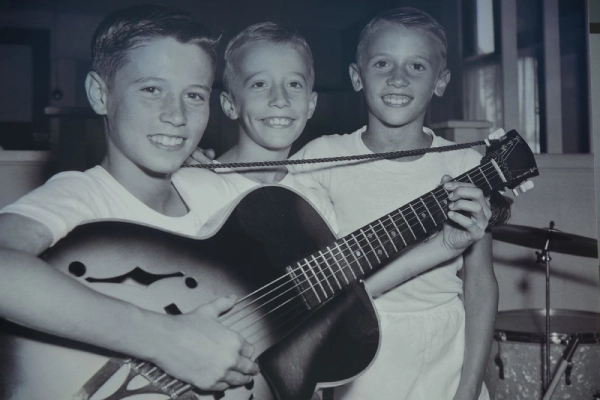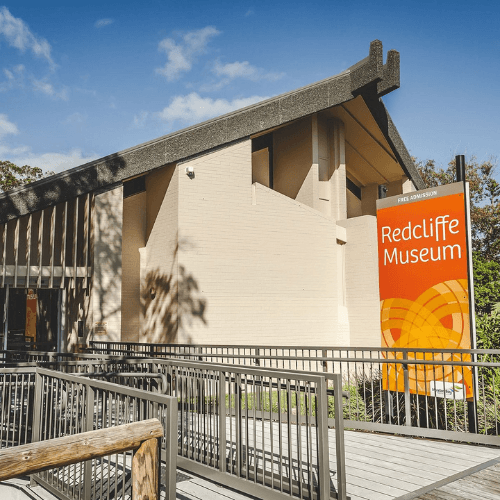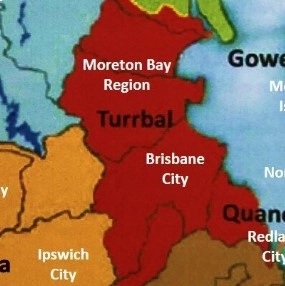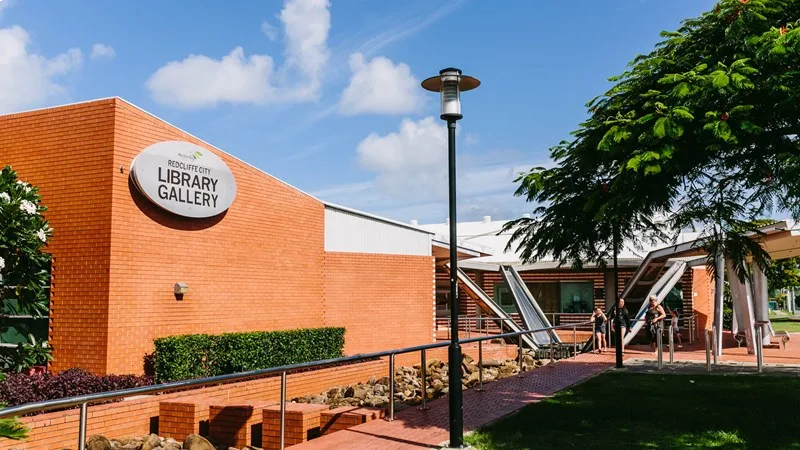The History & Culture Redcliffe
Redcliffe has a rich History and Culture!
The History of Redcliffe, Queensland
The Redcliffe Peninsula was home to the Ningy Ningy people long before European settlement. The Aboriginal name for the area is Kau-in-Kau-in. This translates to “Blood-Blood” and is a reference to the colour red, as in blood red.
The Ningy Ningy people are a sub-group of the Turrbul people of Brisbane and the Gubbi Gubbi People of the Sunshine Coast.
Redcliffe was first explored by Matthew Flinders who landed there on July 17, 1799. It was originally named Red Cliff Point by explorer John Oxley who used the red-coloured cliffs of the region as inspiration. Oxley recommended the name to Governor Thomas Brisbane stating that ships could make it close to shore there under any tide condition. The plan was to establish a Moreton Bay penal colony at the site.

The establishment of the penal colony took place on September 13, 1824, making Redcliffe the first colony in Queensland. The project was carried out under the watchful eye of Lieutenant Henry Miller who had a crew that included 14 soldiers, some with wives and children, and 29 prisoners. A year later, the settlement was abandoned and relocated.
The new site, on the Brisbane River at North Quay, was 28 kilometres (17 miles) south of the original location. The move took place to take advantage of a better water supply. The settlement was responsible for the establishment of what is now Queensland’s capital city, Brisbane.
Redcliffe Continued To Grow
Despite moving the penal colony away from Redcliffe, the region saw tremendous growth when it became a pastoral district in the 1860s. By the 1880s, Redcliffe was attracting attention as a seaside resort. Lots in the Portwood Estate suburban subdivision went up for sale in 1878 to capitalize on the popularity of the region.
Developers involved in the early real estate expansion of Redcliffe even had the foresight to draw in a railway line and railway station to connect Portwood Estates with the rest of Australia. As visionary as that plan was, a railway did not enter the region until 138 years later with the establishment of the Redcliffe Peninsula Railway in October of 2016.
In late 1881, Ramsgate Estate was offered for sale. It included a total of 60 subdivisions within the Parish of Redcliffe. The area was growing fast and in about 1888, the Redcliffe State School opened to address the influx of families moving to the seaside resort. Although that school closed in 1909, it was replaced with a new, and larger facility.
In the 1900’s, Redcliffe saw more Growth
Passenger steamer ships started making regular trips to Redcliffe Jetty in 1911. This ended in 1935 when the Hornibrook Bridge was constructed. The structure connected Redcliffe with Brisbane providing a fast, reliable transportation route by motor vehicle. The bridge opened up further development in the Redcliffe region.
With more families moving to settle in Redcliffe, more schools were needed. In 1922 Our Lady Help of Christians School opened. It remained in service until 1995. In 1958, Redcliffe State High School No. 2045 opened.
In 1935 with the construction of the Hornibrook Highway, the bridge linking Redcliffe to the surrounds of Brisbane, Redcliffe was no longer isolated from the mainland on the Brisbane side.
Famous Family moves to Redcliffe
The musical Gibb family moved to the Redcliffe area in 1958. They emigrated from Manchester, England. It was in Australia that the three Gibb brothers, Barry, Robin, and Maurice formed the Bee Gees.
The group’s first official paid performance was in 1959 at the Redcliffe Speedway. The trio played to the crowd from the back of a pickup truck and spectators tossed money onto the race track in appreciation.

Further Development in Redcliffe
In 1974, Redcliffe’s first high-rise apartment building was constructed. It was located on Marine Parade. As busy as the region was, there was not as much interest in this type of development as only four apartment buildings over 6 stories existed on Redcliffe Peninsula by the year 2000.
In the decade that followed, a renewed interest in the seaside resort and the lifestyle it offered saw an influx of development ranging from high-rise buildings to various mixed-use structures.
To learn more of the local history, the Redcliffe Library and the Redcliffe Museum are well equipped to provide more detailed information. The Redcliffe peninsula has a number of self-guided heritage trails. The little arcades and laneways of Redcliffe provide some interesting history, you just need to look up, and down, and sideways. In recent years, the population of Redcliffe has boomed, yet it is like a seaside town with all the facilities and amenities of a city.
Redcliffe Is Open For Business!
What is your Super Power … Is it supporting our Local Businesses in Redcliffe?
Advertise Here!
We support Redcliffe!
Advertise Here!
Great Spot!

Redcliffe Museum
Redcliffe Museum offers a unique and contemporary look at the people, places, significant moments and stories that have shaped this historical seaside town.
Location
1o Level 1 Comino’s Arcade 133 Redcliffe Parade Redcliffe Qld 4020


